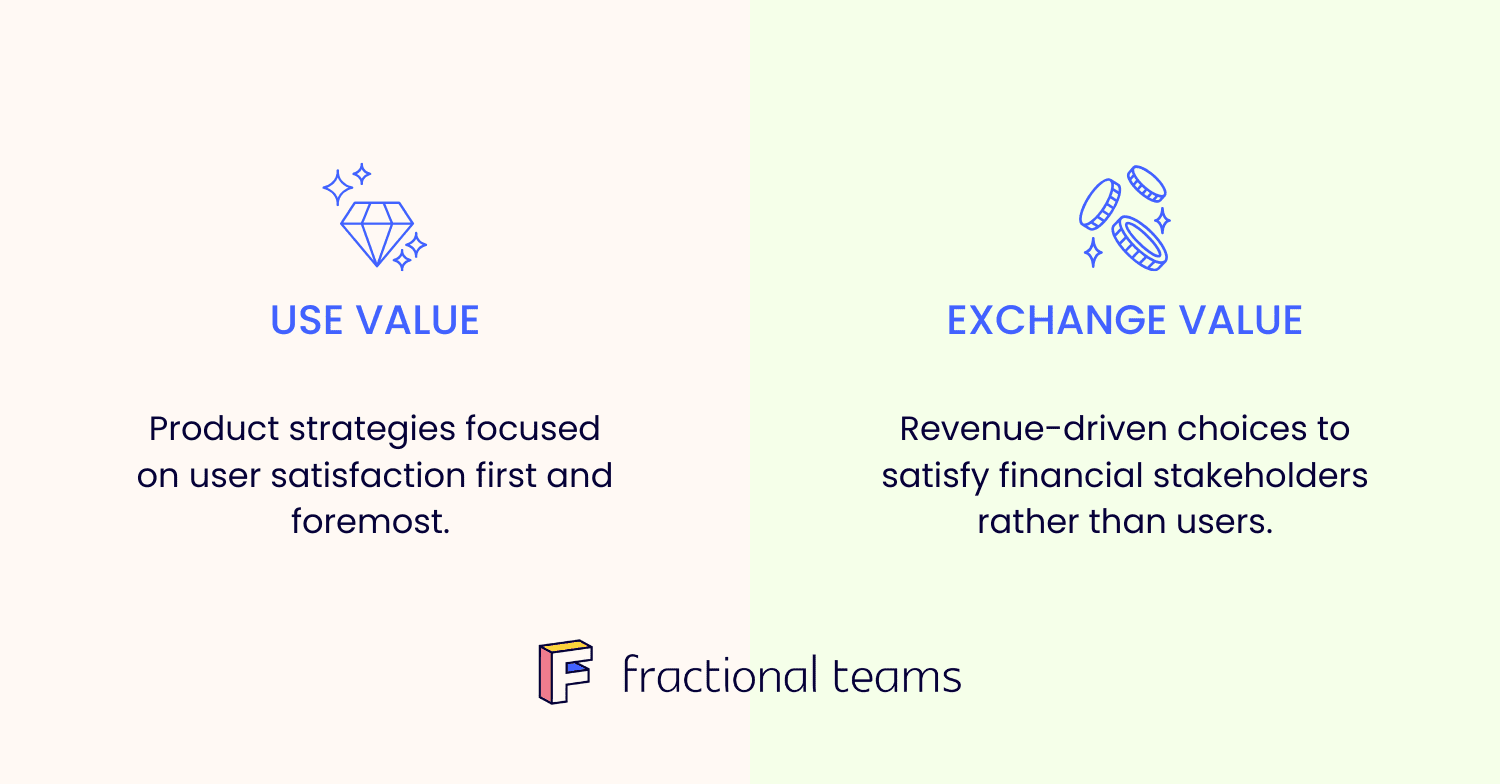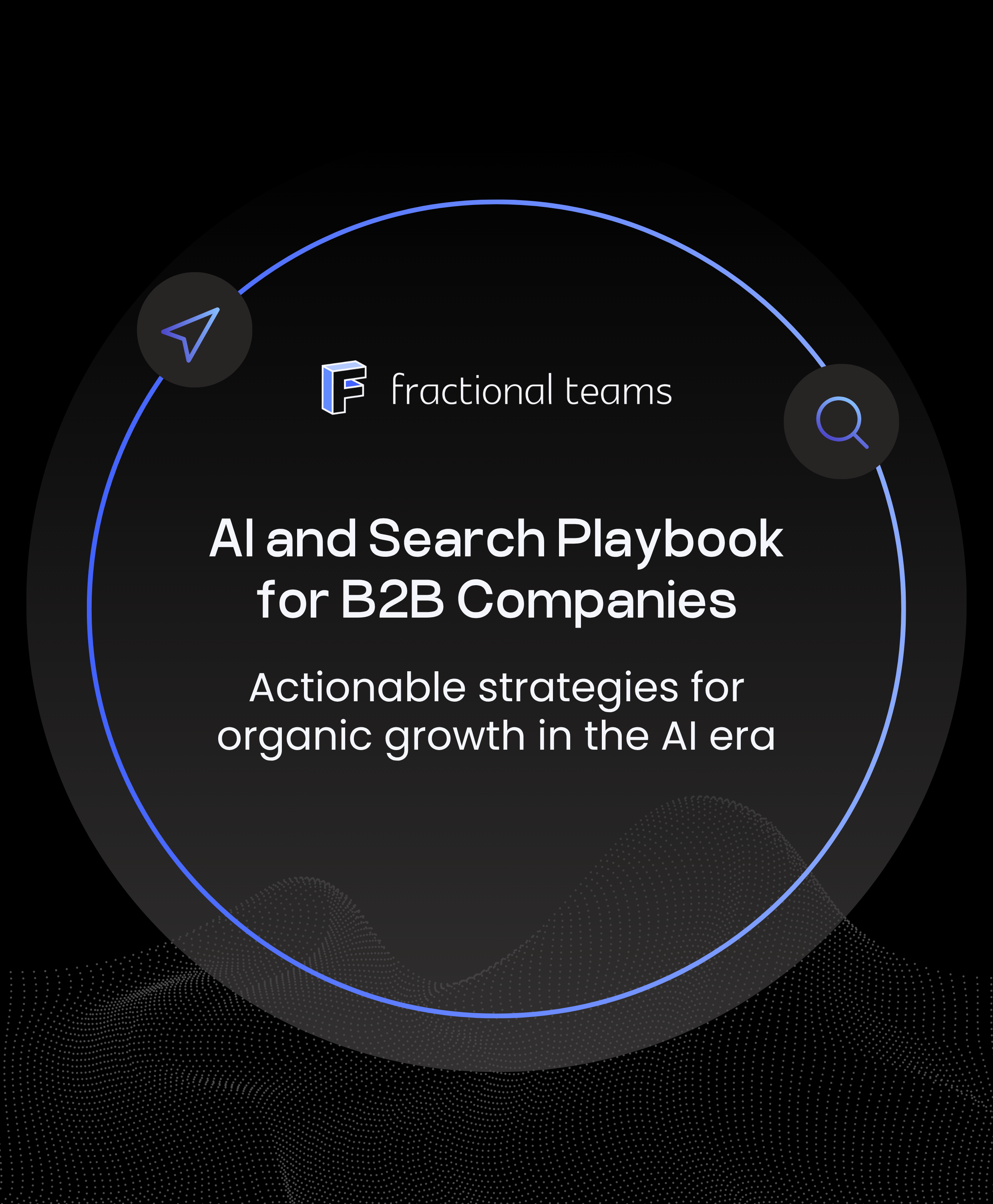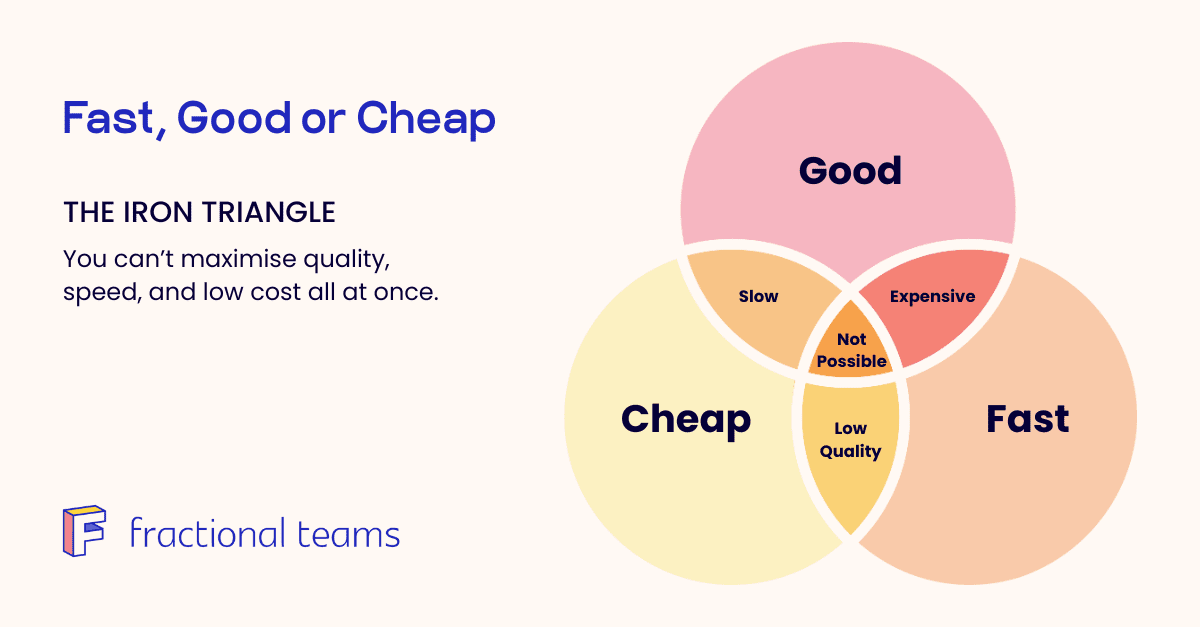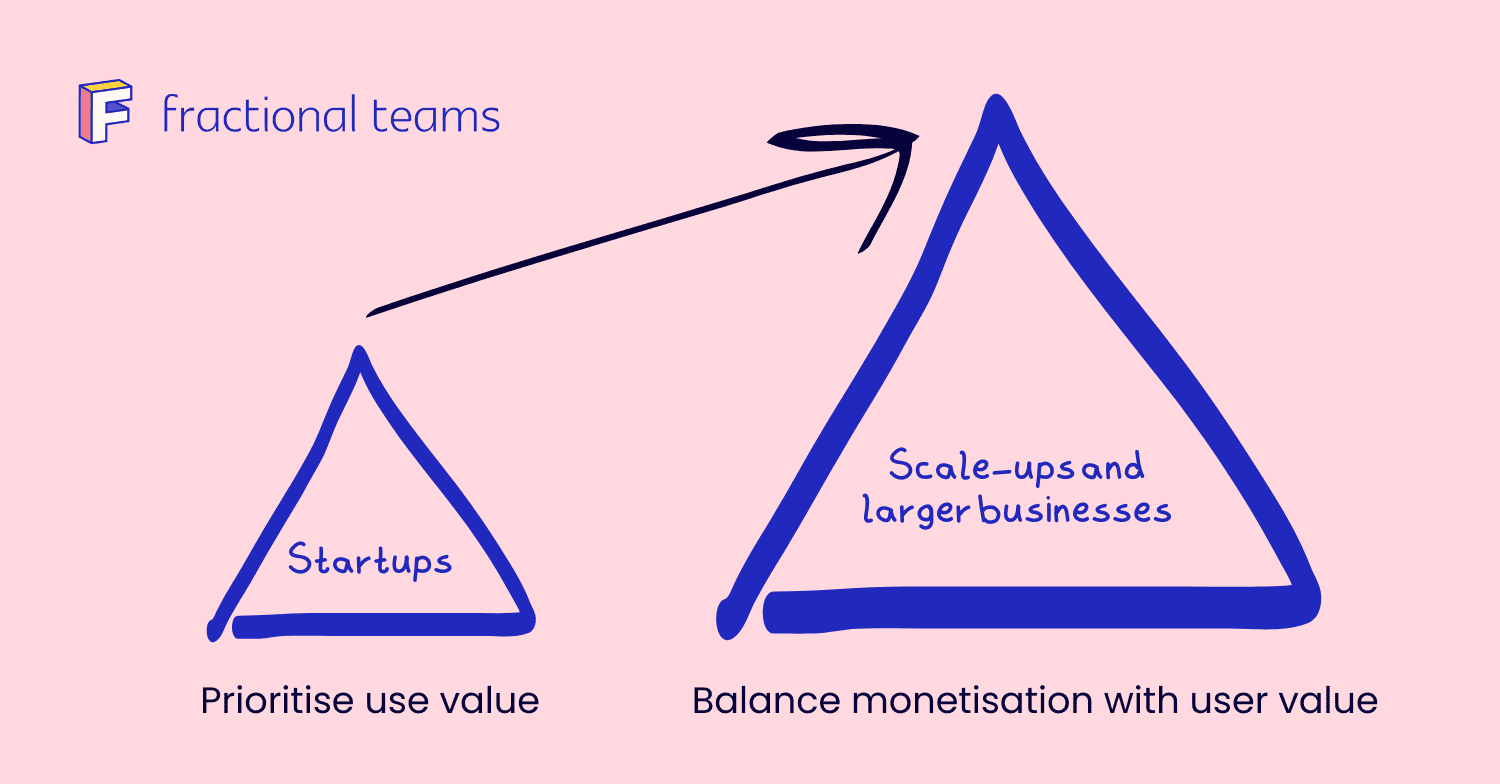Good, Fast, Cheap: Decoding use-value and exchange-value
In the first two parts of this series, we explored why you can’t always have “good, fast, and cheap” all at once and how your product decisions and external market forces influence those trade-offs.
But there’s another layer that makes the triangle even more complex: the tension between use-value and exchange-value.
In plain terms: are you focusing on users’ need, or on financial stakeholders’?
Ideally, you’d achieve both. But in reality, especially as companies grow, these two goals can start pulling in different directions.

Table of Contents
Behind the triangle: Use-value vs exchange-value
Startups: Focused on use-value
In a scrappy startup, use-value reigns supreme. You live and die by whether customers find your product useful and keep using it. You might even give your product away for free or at a low price initially, effectively ignoring exchange-value, just to prove out the usage and impact. The rationale: if you build something indispensable (good), the money will follow.
Early-stage teams often sacrifice short-term revenue, pouring resources into perfecting their core product. They focus on solving real problems and delighting users, knowing that building loyalty is their best chance for survival.
Bigger companies: Shifting toward exchange-value
As companies grow, priorities shift.
Public companies and well-funded scale-ups have to think about revenue targets, profit margins, and investor expectations. Exchange-value starts to drive decisions. This often leads to choices like:
- Shipping new features aimed at monetisation, even if users didn’t ask for them
- Cutting costs in ways that reduce quality
- Increasing prices or introducing fees that frustrate users
These moves aren’t inherently wrong. They’re often necessary for sustaining the business at scale. But they can create a gap between what users truly value and what the company is optimising for.
Want to master AI & search?
The ultimate AI and Search Playbook is coming soon! With 30+ pages of actionable strategies for organic growth in the AI era. Claim 70% off by pre-registering now and be the first to get the playbook that marketers are already buzzing about.

Tying it back to Good-Fast-Cheap
This tension ties directly to the triangle:
Exchange value
Companies leaning heavily into exchange-value often chase “fast and cheap.” They push out new features quickly, cut costs, and aim to look efficient. But this can erode the good side of the triangle.
Use value
Companies focused primarily on use-value may go the opposite way – investing heavily to perfect the product without enough focus on sustainability. They risk running out of resources before the market ever sees their work.
Neither extreme works long-term. The challenge is knowing when to lean toward use-value and when it’s time to focus on exchange-value.

When everyone’s fighting for the same customers, the Good-Fast-Cheap triangle can feel more like a square. External factors often force trade-offs. You may not be able to have all three sides of the triangle at once.
Finding balance for your stage
Early Stage → Prioritise use-value
- Focus on solving real problems for users.
- Measure success through usage, retention, and customer feedback – not just revenue.
- Don’t worry too much about keeping costs minimal at first. Invest in making your product genuinely good.
Scaling Up → Layer in exchange-value
- Find monetisation paths that align with what users already love.
- Avoid pushing monetisation so hard that you damage trust or user experience.
Don’t Cash Out Too Early
Trouble often starts when businesses try to extract too much exchange-value too soon.
Take Reddit, for example. The platform built immense use-value for communities. But when it imposed high API fees, it triggered backlash from developers and power users.
It’s a reminder: short-term monetisation gains can jeopardise the trust and value that took years to build.
A simple question can guide good decisions
Is this decision about creating real user value – or just about hitting a target?
The best companies manage to do both. They build features users love that also open up new markets or revenue streams. But when forced to choose, know your stage:
- Startups should lean toward the user.
- Mature companies should monetise thoughtfully without sacrificing what users value most.
Even large corporations win long-term by staying focused on genuine user value. Amazon delayed profits for years to prioritise customers and turned that approach into one of the biggest businesses in the world.

Actionable strategies for the Good-Fast-Cheap challenge
By now, we’ve examined the theory and some examples of the Good-Fast-Cheap dilemma. Let’s get concrete. What practical steps can you take as a product leader or founder to maximise your odds of “having it all” (or at least coming close)?
Here’s a rundown of actionable strategies for balancing quality, speed, and cost:
1. Prioritise core value
Identify the one or two things your product must do exceptionally well. Focus your quality efforts there. Peripheral features can wait.
If we had to market our product on one feature, what would it be? Make that feature excellent.
2. Embrace the MVP (but make it viable)
A Minimum Viable Product shouldn’t be half-baked. It should solve a real problem, even if the experience is basic.
Define what “viable” means for your users. Ship that version, get feedback, and improve. You don’t need perfection upfront, but you do need reliability.
3. Time-box and budget-box experiments
When testing new ideas, set limits:
→ “We’ll spend four weeks and $5,000 exploring this.”
Constraints prevent projects from dragging on endlessly and keep teams focused. If an idea proves itself, you can invest further. If not, you’ve limited your losses.
4. Start small and niche
Start with a tight focus where you can deliver the best solution for a specific group.
→ High quality is more achievable with fewer features.
→ Marketing is clearer when the audience is specific.
Expand gradually once you’ve built momentum.
5. Use existing tools and platforms
Avoid rebuilding parts of your product that aren’t core to your unique value.
→ Lean on third-party services, open-source tools, or no-code solutions.
→ Save your budget and time for what truly differentiates you.
6. Build iteratively with users involved
Involve real users early and keep them involved.
- Their feedback reveals what matters and what doesn’t.
- Prevents months of work on features no one wants.
- Early users often become your best advocates.
7. Optimise for learning speed
Speed isn’t just shipping quickly, it’s also learning quickly.
Tune your product to see how users behave. Track where they succeed or get stuck. Run focused experiments like A/B tests.
Learning fast helps avoid costly mistakes and refines your product faster.
8. Use AI and automation (smartly)
Automate repetitive or time-consuming tasks. For example:
- Automated testing
- CI/CD pipelines
- AI coding tools like GitHub Copilot
A recent survey found 75% of software execs saw up to a 50% reduction in development time by implementing AI and automation in their workflows. That’s a huge efficiency gain.
Basically, getting faster and cheaper without sacrificing quality. Just be sure to review AI outputs carefully. Use the tech to complement your team, not replace critical thinking.
9. Stay alert to market changes
Keep talking to your customers and watching the market. If you spot a shift – a new competitor, changing customer expectations – adjust your roadmap.
10. Smart hiring and team structuring
Good, fast, and cheap all come down to people. In the early stages, hire T-shaped team members who excel in one skill but can flex across roles, reducing the need for a large headcount.
For specialised work, use fractional roles or contractors instead of full-time hires. For example, bring in a fractional product manager or UX designer to guide strategy without adding a full salary.
As your team grows, build a culture focused on impact over output and encourage simple, effective solutions. Sometimes one strong engineer can achieve more than three mediocre ones, delivering higher quality faster.
Each of these steps is about making deliberate choices with your limited resources. You may not always achieve perfect balance across good, fast, and cheap but you’ll get much closer than if you try to do everything without clear priorities.
The triangle’s constraints often spark creativity. Instead of seeing it as a limitation, treat it as a guide. Ask yourself: How can we deliver faster without losing quality? How can we reduce costs without slowing down or sacrificing standards?
The answers to those questions often lead to smarter solutions that set your team apart.
Conclusion: Can you really have it all?
Across this series, we’ve explored how the Good-Fast-Cheap triangle shapes every SaaS product decision. We’ve looked at internal choices around scope and quality, the external market forces that can disrupt even the best plans, and the deeper tension between building true value for users and creating perceived value in the market.
The truth is, you probably won’t achieve perfect balance at every moment. But that doesn’t mean you’re doomed to sacrifice one side of the triangle entirely. With the right strategy, you can navigate these trade-offs without losing sight of what matters most: building products your customers genuinely value.
The key is being intentional. Focus on delivering real user value (good), making steady progress in manageable steps (fast), and keeping costs under control through smart tools, clear priorities, and flexible talent models (cheap).
And you don’t have to do it alone. That’s where Fractional Teams can help. Whether you need fractional product managers to sharpen your core value, growth marketers to help you reach new channels, or specialists to keep projects moving, we’re ready to work alongside your team.
We provide flexible, high-calibre product and marketing talent that integrates seamlessly into your business, helping you deliver quality outcomes quickly and cost-effectively.
Curious how you could shift the balance in your favour? Get in touch with Fractional Teams to explore how fractional support could help you build products your customers truly value without the usual trade-offs.
Dariia Panchenko
Hi! I'm Dariia Panchenko, Analytics and Community Manager at Fractional Teams. I write about the best B2B marketing strategies and practices.
